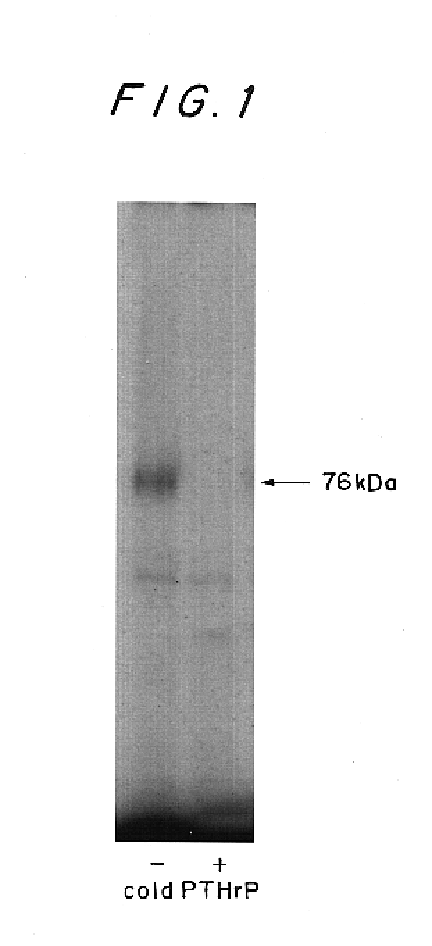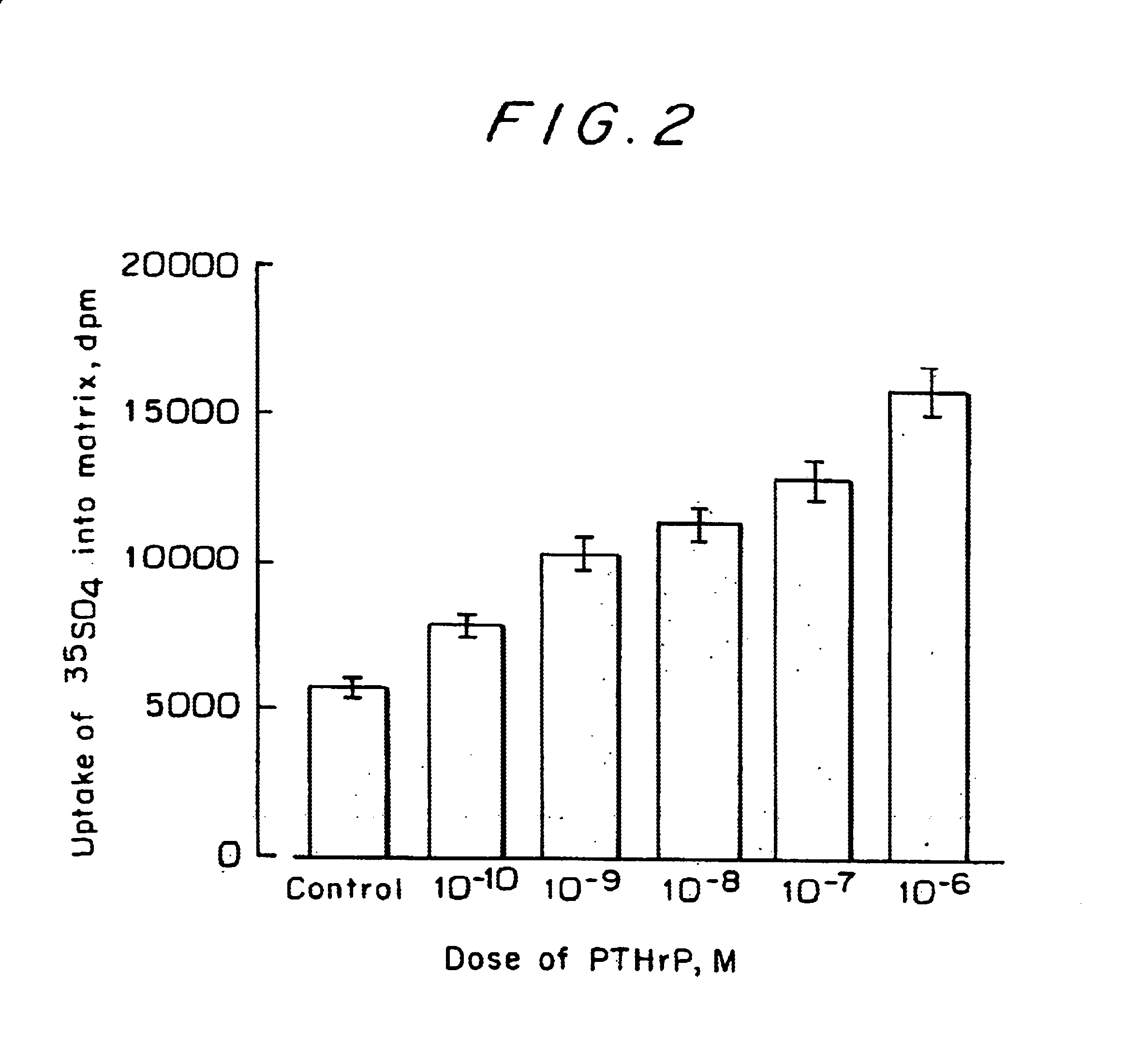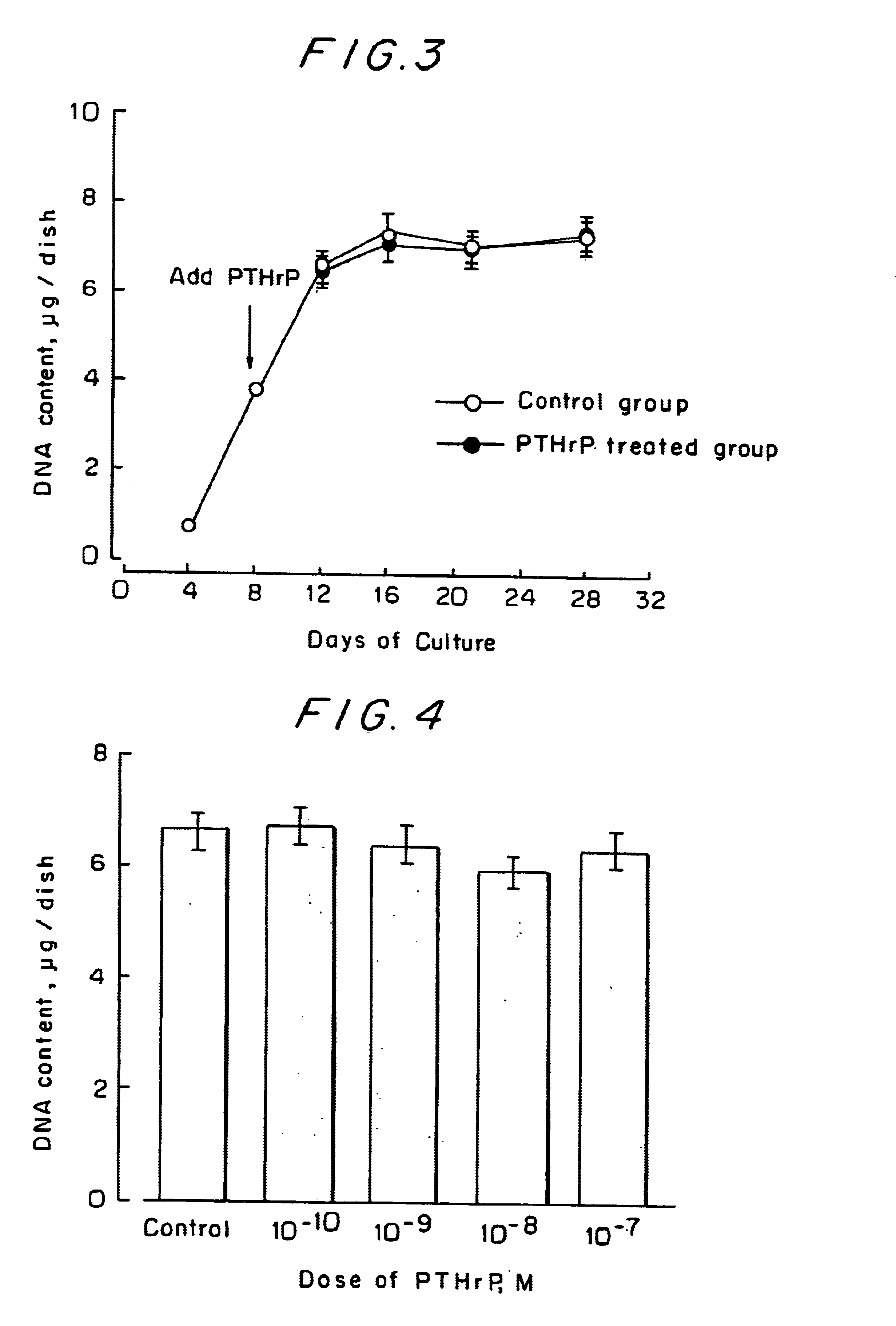Therapeutics of osteoarthritis and inflammatory joint disease
- Summary
- Abstract
- Description
- Claims
- Application Information
AI Technical Summary
Benefits of technology
Problems solved by technology
Method used
Image
Examples
example 1
In the following Examples, grown chondrocytes were separated from the subchondral bone to bone transition area of rabbits 4 weeks old from birth by the method of Shimomura et al. (Shimomura, Y. et al., Calcif. Tissue Res. 19, 179-187, 1975). The separated chondrocytes were cultivated by the method of Iwamoto et al. (Iwamoto, M. et al. Dev. Biol. 136 500-507, 1989) and the method of Kato et al. (Kato, Y. et al. Endocrinology, 127, 114-118, 1990). Stated specifically, the separated chondrocytes were suspended in an Eagle's minimum essential medium (MEM) to give a concentration of 8.times.10.sup.4 cells / mL in the presence of 10% fetal bovine serum (FBS) and 50 .mu.g / mL of ascorbic acid and then seeded in 1-mL portions into 15-mL plastic centrifugal tubes (Corning). After 5-min centrifugation (at 1,500 rpm), the cells were cultivated in a CO.sub.2 gas incubator having a temperature setting of 37.degree. C. Starting on the 6th day of the cultivation, medium changes were made every other ...
example 2
As in Example 1, grown chondrocytes were separated from the subchondral bone to bone transition area of rabbits 4 weeks old from birth by the method of Shimomura et al. (Shimomura, Y. et al., Calcif. Tissue Res. 19, 179-187, 1975). The separated chondrocytes were suspended in an Eagle's minimum essential medium (MEM) containing 10% fetal bovine serum and 50 .mu.g / mL of ascorbic acid and seeded in a 96-well culture plate at a concentration of 5,000 cells in each well. When the cells became confluent, PTHrP was added and, one day later, 1 .mu.Ci of .sup.33 S-sulfuric acid was added per well, followed by 17-h cultivation. The amount of cartilage matrix produced in the supernatant of the culture solution was measured by the method of Kato et al. (Kato, Y. et al., Endocrinology 122, 1991-1997, 1988). Briefly, the quantity of .sup.33 S-sulfuric acid incorporated into proteoglycans was measured.
The results are shown in FIG. 2, which may be regarded as a dose response curve for PTHrP over t...
example 3
As in Example 1, chondrocytes were cultured in a centrifugal tube. On the 8th day of the cultivation, 10.sup.-7 M of PTHrP was added and the cultivation was continued for 28 days. After the cultivation, the cells were solubilized at appropriate intervals and the time-dependent changes in DNA content were measured. In another experiment, PTHrP was added at varying concentrations from 10.sup.-10 to 10.sup.-7 M and the DNA content on the 21st day of the cultivation was measured.
The time-dependent changes in the DNA content of the chondrocytes are shown in FIG. 3 and the dose-response relationship between PTHrP and the DNA content is shown in FIG. 4. Obviously, the DNA content of the control group increased with time, indicating satisfactory growth of chondrocytes in the centrifugal tube. The DNA content of the chondrocytes was not influenced at all by the addition of PTHrP. This shows that PTHrP is a drug that causes no adverse effects on the growth of chondrocytes.
PUM
 Login to View More
Login to View More Abstract
Description
Claims
Application Information
 Login to View More
Login to View More - R&D
- Intellectual Property
- Life Sciences
- Materials
- Tech Scout
- Unparalleled Data Quality
- Higher Quality Content
- 60% Fewer Hallucinations
Browse by: Latest US Patents, China's latest patents, Technical Efficacy Thesaurus, Application Domain, Technology Topic, Popular Technical Reports.
© 2025 PatSnap. All rights reserved.Legal|Privacy policy|Modern Slavery Act Transparency Statement|Sitemap|About US| Contact US: help@patsnap.com



